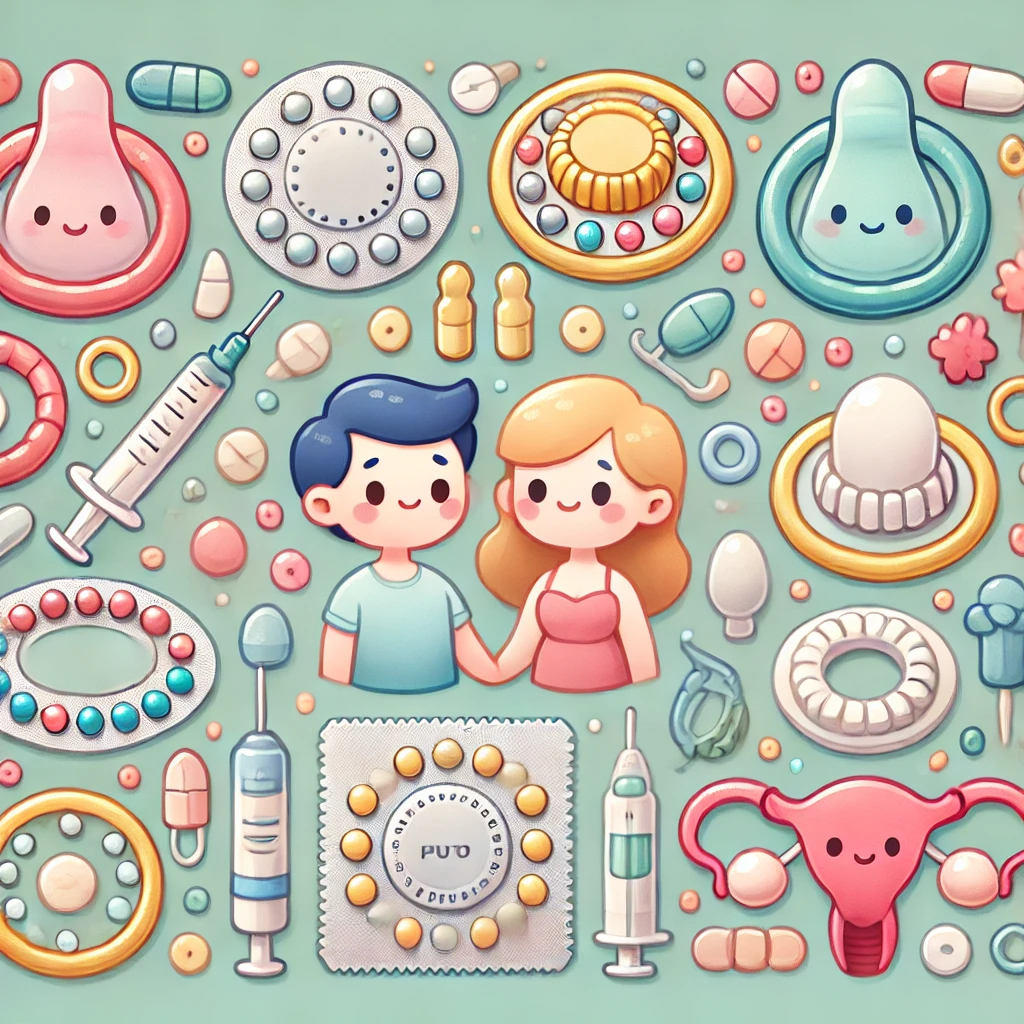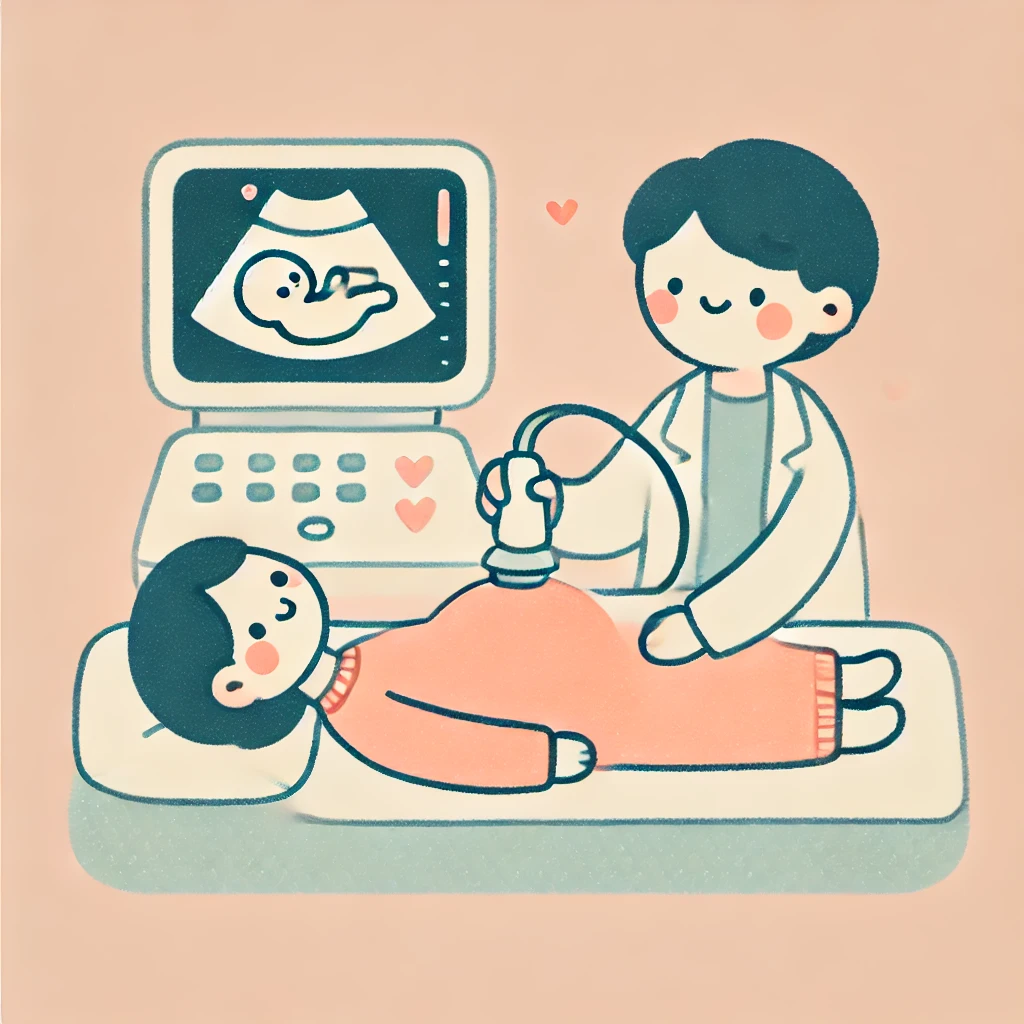Reproductive health is a comprehensive concept that encompasses the physical, emotional, social, and behavioral well-being of individuals concerning their reproductive system and its functions. It is not merely the absence of diseases or disorders but a holistic approach to ensure that individuals can have a responsible, satisfying, and safe sexual life, with the capability to reproduce and the freedom to decide if, when, and how often to do so. Achieving optimal reproductive health is crucial for the overall development and well-being of individuals and societies.
Key Components of Reproductive Health:

- Family Planning and Contraception:Effective family planning allows individuals and couples to anticipate and attain their desired number of children and the spacing and timing of their births. This is achieved through the use of contraceptive methods and the treatment of involuntary infertility.
- Natural Methods:
- Periodic Abstinence: Also known as the rhythm method, this involves avoiding sexual intercourse during the woman’s fertile window, typically between the 10th to 17th day of the menstrual cycle.
- Coitus Interruptus: Commonly referred to as the withdrawal method, it involves the male partner withdrawing his penis from the vagina before ejaculation to prevent sperm from entering the female reproductive tract.
- Lactational Amenorrhea: This method is based on the natural postpartum infertility that occurs when a woman is exclusively breastfeeding. The act of breastfeeding suppresses ovulation, thereby reducing the chances of conception. However, this method is most effective during the first six months postpartum and requires the absence of menstruation.
- Barrier Methods:
- Male Condoms: Thin sheaths made of latex or polyurethane worn over the penis during intercourse to prevent sperm from entering the female reproductive tract. They also provide protection against sexually transmitted infections (STIs).
- Female Condoms: Pouches inserted into the vagina before intercourse, creating a barrier that prevents sperm from reaching the egg. Like male condoms, they also offer protection against STIs.
- Diaphragms and Cervical Caps: These are dome-shaped devices made of silicone or latex that are inserted into the vagina to cover the cervix, blocking sperm entry. They are often used in conjunction with spermicidal agents to increase efficacy.
- Intrauterine Devices (IUDs):
- Non-Medicated IUDs: Devices like the Lippes Loop that create a local inflammatory response in the uterus, which is toxic to sperm and eggs, thereby preventing fertilization.
- Copper-Releasing IUDs: Devices such as CuT, Cu7, and Multiload 375 release copper ions into the uterus. Copper acts as a spermicide, impairing sperm motility and viability, thus preventing fertilization.
- Hormone-Releasing IUDs: Devices like LNG-20 release levonorgestrel, a form of progestin, which thickens cervical mucus to prevent sperm penetration and thins the endometrial lining, making it less suitable for implantation.
- Oral Contraceptives:
- Combined Oral Contraceptives: These pills contain both estrogen and progestin. They work by inhibiting ovulation, altering the cervical mucus to prevent sperm penetration, and changing the endometrial lining to prevent implantation.
- Progestin-Only Pills: Also known as the “mini-pill,” these contain only progestin and are suitable for women who cannot take estrogen. They primarily work by thickening cervical mucus and thinning the endometrial lining.
- Non-Steroidal Pills: An example is ‘Saheli,’ developed by the Central Drug Research Institute (CDRI) in India. It is a non-steroidal oral contraceptive taken weekly and has been found to be effective with minimal side effects.
- Injectables and Implants:
- Injectables: These are hormonal injections containing progestin or a combination of estrogen and progestin, administered every few months to prevent ovulation.
- Implants: Small, flexible rods or capsules inserted under the skin of the upper arm, releasing hormones over an extended period (typically 3-5 years) to inhibit ovulation and thicken cervical mucus.
- Emergency Contraception:
- Emergency Contraceptive Pills (ECPs): Also known as “morning-after pills,” these contain higher doses of hormones found in regular birth control pills and are taken within 72 hours of unprotected intercourse to prevent ovulation or fertilization.
- Copper IUD: Insertion of a copper IUD within five days of unprotected intercourse can serve as emergency contraception by preventing fertilization and implantation.
- Surgical Methods (Sterilization):
- Vasectomy: A permanent method for males involving the surgical cutting and sealing of the vas deferens, preventing the transport of sperm from the testes to the urethra.
- Tubectomy (Tubal Ligation): A permanent method for females involving the surgical cutting and sealing of the fallopian tubes, preventing the egg from traveling from the ovaries to the uterus.
- Natural Methods:
- Sexually Transmitted Infections (STIs):STIs, also known as sexually transmitted diseases (STDs) or venereal diseases (VDs), are infections transmitted primarily through sexual contact. They pose significant health risks and can lead to serious complications if left untreated.
- Common STIs:
- Bacterial Infections:
- Chlamydia: Caused by the bacterium Chlamydia trachomatis, it is often asymptomatic but can lead to pelvic inflammatory disease (PID) and infertility if untreated.
- Gonorrhea: Caused by Neisseria gonorrhoeae, it can infect the genital tract, rectum, and throat, leading to complications like PID in women and epididymitis in men.
- Syphilis: Caused by Treponema pallidum, it progresses through stages and can cause severe systemic complications if not treated.
- Bacterial Infections:
- Common STIs:
- Viral Infections:
- Human Immunodeficiency Virus (HIV/AIDS):
- Caused by the HIV virus, which attacks CD4+ T cells of the immune system, leading to Acquired Immunodeficiency Syndrome (AIDS).
- Transmission occurs through unprotected sex, blood transfusions, sharing of needles, and from mother to child during childbirth or breastfeeding.
- No cure exists, but antiretroviral therapy (ART) helps manage the disease.
- Genital Herpes:
- Caused by Herpes Simplex Virus (HSV), leading to painful sores on the genitals or mouth.
- No cure, but antiviral drugs like acyclovir can manage symptoms.
- Human Papillomavirus (HPV):
- Causes genital warts and is linked to cervical cancer in women.
- Preventable by vaccines like Gardasil and Cervarix.
- Hepatitis B:
- Affects the liver and is transmitted through sexual contact, blood transfusion, or from mother to child.
- Can lead to liver failure or cancer; vaccination provides protection.
- Protozoan and Fungal Infections:
- Trichomoniasis: Caused by Trichomonas vaginalis, leading to vaginal discharge and discomfort.
- Candidiasis (Yeast Infection): Caused by Candida albicans, leading to itching, discharge, and irritation in the genital area.
- Prevention of STIs:
- Use of barrier contraceptives like condoms.
- Regular medical check-ups and early treatment.
- Vaccination (e.g., HPV and Hepatitis B vaccines).
- Avoiding multiple sexual partners and high-risk behaviors.

3. Assisted Reproductive Technologies (ART)
ART includes medical techniques used to aid reproduction in individuals facing infertility.
- In Vitro Fertilization (IVF):
- Eggs are retrieved from the ovaries, fertilized with sperm in a lab, and implanted in the uterus.
- Zygote Intrafallopian Transfer (ZIFT):
- A zygote (fertilized egg) is transferred into the fallopian tube instead of the uterus.
- Gamete Intrafallopian Transfer (GIFT):
- Sperm and eggs are placed directly into the fallopian tube for natural fertilization.
- Intracytoplasmic Sperm Injection (ICSI):
- A single sperm is injected directly into an egg to facilitate fertilization.
- Surrogacy:
- A surrogate mother carries a baby for another couple using either her own egg (traditional surrogacy) or an implanted embryo (gestational surrogacy).
- Cryopreservation:
- Freezing of gametes (sperm or eggs) or embryos for later use.
4. Medical Termination of Pregnancy (MTP) (Abortion)
- Definition:
- Deliberate termination of pregnancy before fetal viability (before 20 weeks in India).
- Reasons for MTP:
- Unwanted pregnancy.
- Health risks to the mother.
- Fetal abnormalities.
- Rape or incest cases.
- Legal Aspects:
- MTP is legal in many countries but regulated to prevent misuse.
- Unsafe abortions can lead to severe complications, including infertility and maternal death.
5. Infertility
- Definition:
- Inability to conceive after one year of unprotected intercourse.
- Causes:
- Male Infertility: Low sperm count, poor motility, hormonal imbalances, genetic defects.
- Female Infertility: Ovulation disorders, blocked fallopian tubes, endometriosis, uterine fibroids.
- Treatment Options:
- Hormonal therapy for ovulation disorders.
- Surgery for structural problems.
- ART techniques like IVF, ICSI, and surrogacy.
6. Sex Education and Awareness
- Importance of Sex Education:
- Promotes safe sexual practices.
- Reduces unwanted pregnancies and STIs.
- Encourages informed decision-making regarding reproductive health.
- Key Topics Covered:
- Puberty and hormonal changes.
- Contraceptive methods.
- Prevention of STIs.
- Menstrual hygiene and reproductive rights.
7. Government and NGO Initiatives for Reproductive Health

- Family Planning Programs:
- Encourages contraceptive use and birth spacing.
- Government initiatives like Mission Parivar Vikas in India aim to reduce population growth rates.
- Maternal and Child Health Programs:
- Ensuring safe pregnancy and childbirth.
- Promotion of institutional deliveries to reduce maternal mortality.
- STI and HIV/AIDS Awareness Campaigns:
- Programs like the National AIDS Control Programme (NACO) in India.
- Adolescent Reproductive and Sexual Health (ARSH) Program:
- Provides education and counseling to teenagers.
Conclusion
Reproductive health is a vital aspect of overall well-being, encompassing safe reproductive practices, disease prevention, and access to healthcare services. Through effective family planning, awareness programs, and medical advancements, societies can improve reproductive health outcomes and ensure better quality of life for individuals.
